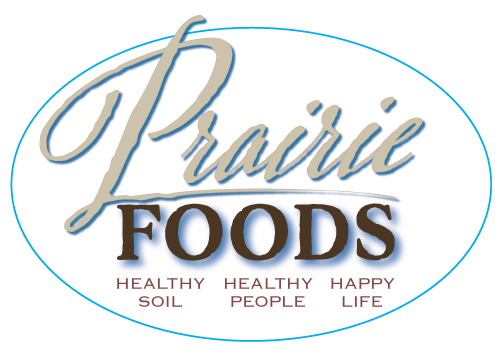Disrupting the Routine: How We Use Grazing to Build Soil Health
posted on
July 11, 2025

We’ve previously explored the six principles of soil health. In this post, I want to talk about grazing—and how we've learned, sometimes the hard way, that true soil health requires more than just rotating animals through a pasture.
We’ve built a system on our farm that’s intentionally disruptive—designed to support long-term soil vitality. Along the way, we’ve made our fair share of mistakes, many of which we still see other graziers repeating.
Rotation Isn’t Enough
Most of us understand that planting the same crop in the same field year after year depletes soil. What’s less obvious is that grazing the same way year after year can have the same effect.
Even if a grazier rotates his animals or starts in a different paddock each spring, the impact on the soil remains largely unchanged—unless he's also changing two key things: recovery period and stock density.
It’s easy to fall into a default pattern—say, a 30- or 40-day rotation—and stick with it all summer. But if that schedule leads to repeated overgrazing, it’s not much different than monocropping. And that’s the biggest mistake we made early on—and still the most common one we see others make.
Facing Reality as Graziers
Let’s be honest: many of us think we’re saving the world by farming with grass instead of crops. And in many ways, grazing is better. But if we’re not managing our grazing with intentional disruption, our soils may actually be less healthy than the neighboring crop farmer who’s rotating cover crops—even if he uses herbicides.
That said, rotation alone doesn’t tell the whole story. We know graziers who stick to a set pattern but manage long recovery periods (45+ days) and allow plenty of trampling. That’s a step in the right direction—but we’ve found we can go further.
What Made the Biggest Difference
The best thing we’ve done on our farm is simple: we lengthened our recovery periods.
With a 45- to 60-day recovery window, our cows graze more evenly, overgrazing is reduced, and more grass gets trampled back into the soil. Longer rests also allow grasses to mature, which improves plant health and raises Brix levels (a measure of sugar and nutrient density).
Over time, those more mature grasses—on healthier soils—become far better feed than 30-day grasses from depleted land. They may look "old," but nutritionally they’re in a different category altogether.
Remember: mature grass on healthy soil is not the same as mature grass on depleted soil.
Disrupting the System (On Purpose)
To break out of the rut of fixed rotations and depleted pastures, we designed a system of intentional disruption. Here’s how it works for us:
-
In spring, when grass is growing rapidly and heading out, we let it go. We don’t try to stay ahead of it. About half the farm is allowed to grow up and go to seed. We might make hay from some of it. We keep the other half in a vegetative state for active grazing. Sometimes we rotate those areas on a 20-day cycle—but only on half the farm.
-
During the summer slump, when we want to extend recovery to 60 days or more, we bring those older, brown areas back into the rotation. We graze them at night only, using very high stock density in small areas. Since cows don’t eat much overnight, they trample most of it, fertilizing and feeding the soil. Then we move them to good pasture during the day to maintain production.
This approach gives us natural variability in recovery—ranging from 20 to over 100 days—while creating meaningful soil disturbance and encouraging plant diversity.
Managing Stock Density and Flexibility
We don’t obsess over mobbing every day. Sometimes we run densities as high as a million pounds per acre. Other times, we move them every few hours—or, if we’re out of town, we give them several days of pasture.
What we’ve discovered is this: if you get recovery periods right, stock density becomes less critical.
That flexibility gives us the margin to focus on other parts of the business—like marketing and connecting with customers—without sacrificing pasture performance.
One More Key: Disrupt Grazing Height
Another mistake we’ve corrected is always grazing to the same height. While we usually just graze the tops, we occasionally graze harder or even overgraze on purpose. That disturbance allows different species to express themselves and contributes to pasture diversity.
Final Thoughts
This is the system that’s working for us—built from trial, error, and paying close attention to our land. Every farm is different. Every grazier has their own schedule and constraints. But one principle holds true: if we want living, thriving soil, we have to disrupt the status quo.
We encourage you to find what works on your land. And if you’ve discovered practices that build soil, regenerate pastures, or improve herd health—we’d love to hear from you.




